01:00
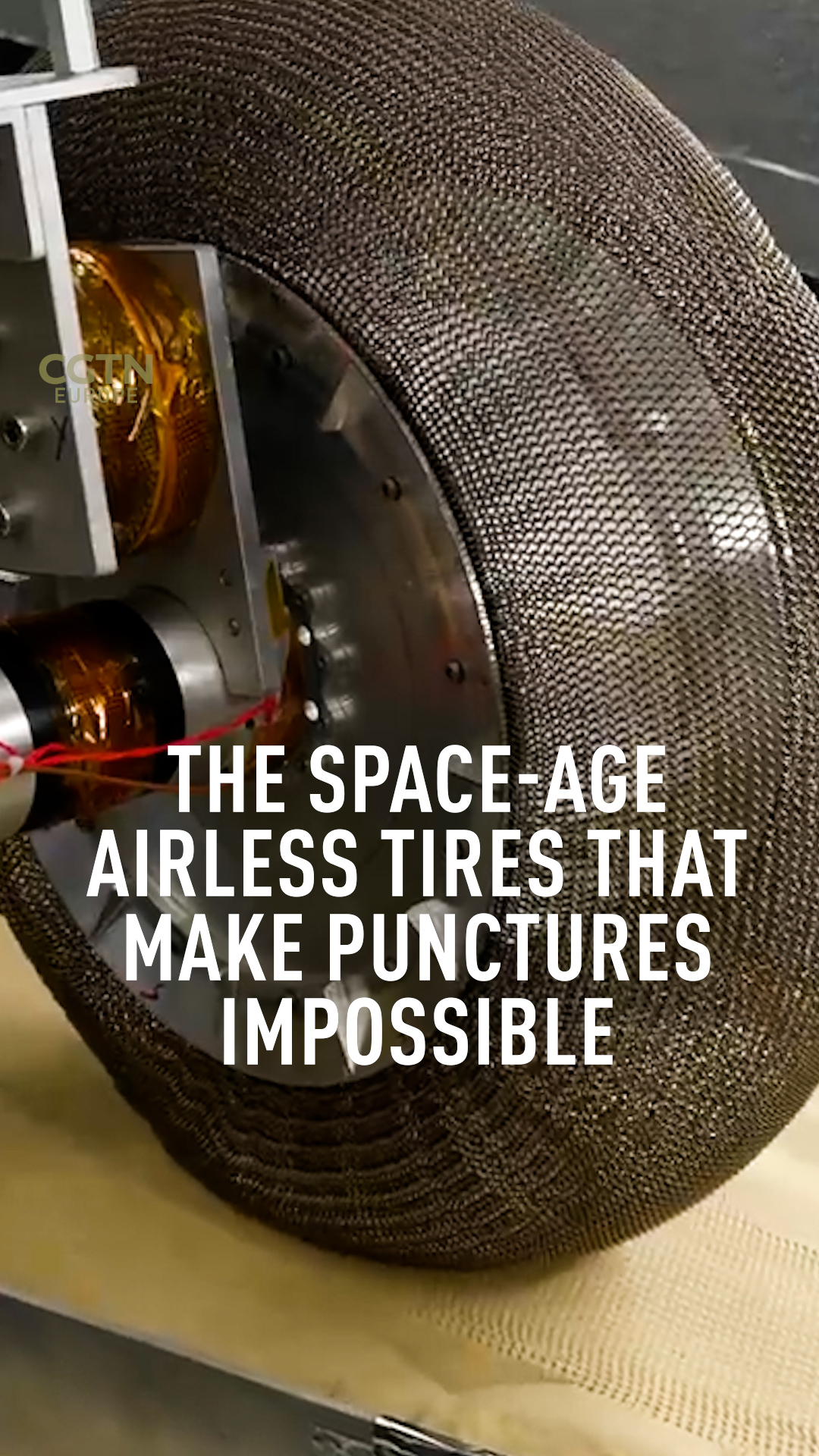
The mass production of airless tires - first created for lunar rovers - could make punctures a thing of the past, according to a new tire company that is aiming to revolutionize the industry and fight the scourge of rubber-tire pollution.
And the time for a tire revolution couldn't be more necessary.
Despite huge leaps in car technology, the tires we use today haven't changed much in over a hundred years. They're rubber, highly durable, but always need replacing every five or so years.
But with around 2 billion tires produced each year - and some 4 billion laying in landfills around the world - they are a major environmental problem.
READ MORE:
Is it time for Europe to fast track the roll out of EV charging points?
China primed to lead Europe's electric vehicle market despite hurdles
London's 'super sewer' nears completion
Not only can they release toxic chemicals and take up vast amounts of space; even while tires are in use, they release microplastic particles that may pose a serious risk to human health and marine life.
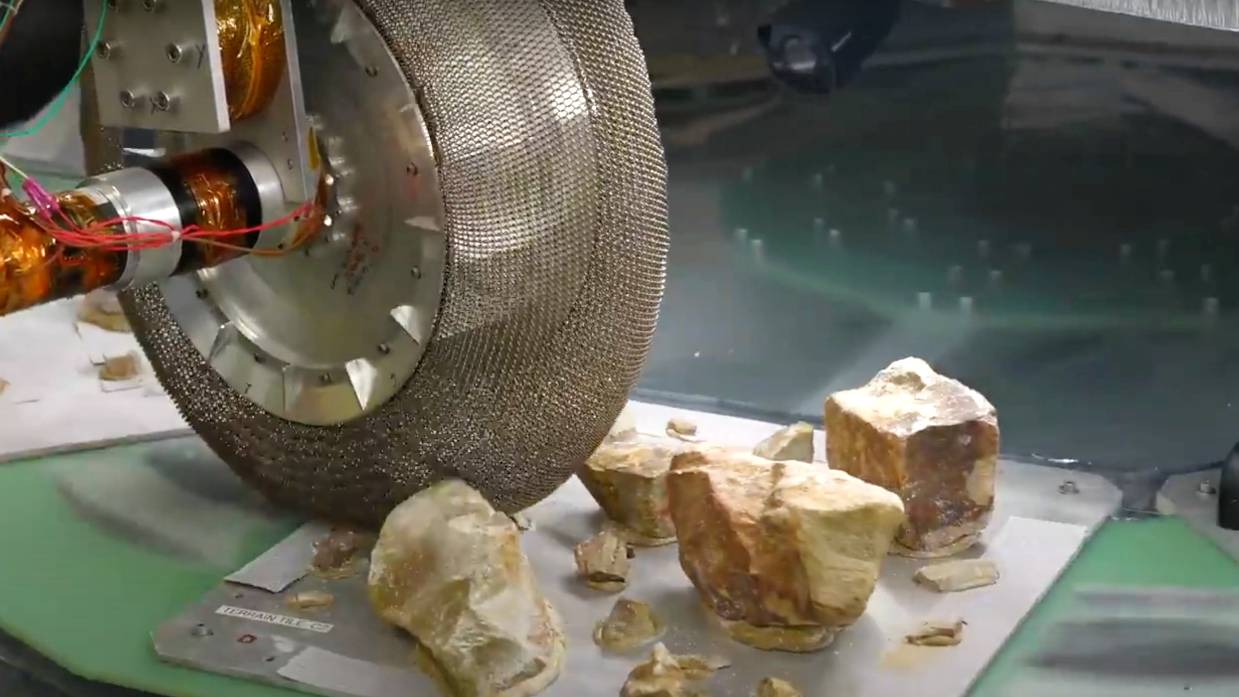
The tires' highly flexible mesh design means they can be used on extremely abrasive terrain without being punctured or deformed. /SMART Tire Company
The tires' highly flexible mesh design means they can be used on extremely abrasive terrain without being punctured or deformed. /SMART Tire Company
That's why the SMART Tire Company has decided to adapt NASA's airless tire technology for terrestrial use, hoping that one day the space-age wheels will overtake the rubber norm.
Their tires are airless, durable and will never go flat, according to the LA-based company, because they use a springy mesh design made of shape memory alloy (SMA) which is elastic like rubber, yet strong like titanium.
"You're able to use this as a structural element in a tire, so you don't need any pressurized air," says company co-founder and CEO Earl Cole.
"That means an airless tire; punctures don't matter. It would never, ever get a flat so your tire can last the life of your vehicle."
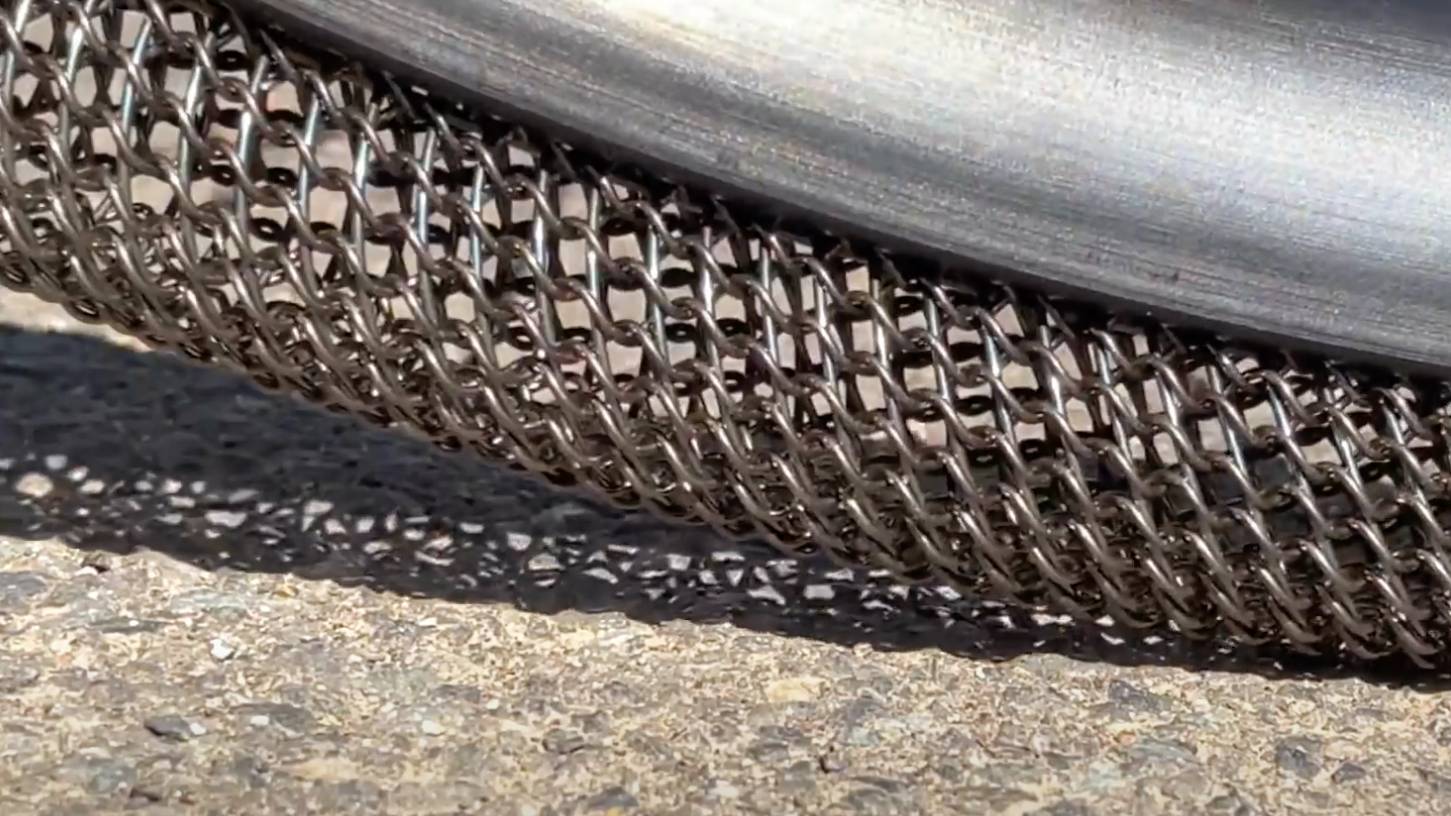
SMART tires use a springy mesh design made of shape memory alloy that's elastic, yet strong. /SMART Tire Company
SMART tires use a springy mesh design made of shape memory alloy that's elastic, yet strong. /SMART Tire Company
Their tire designs also do not require an inner frame which both simplifies and lightens the tire/wheel assembly, while the highly flexible mesh design means they can be used on extremely abrasive terrain without any puncture or deformation.
Green credentials
With SMART tires the only rubber part on the wheel is the tread - the thin sheath-like outer part that gives grip on the road - which can easily be replaced without throwing away the whole tire, as is currently the case.
It also offers a solution for the growing popularity of electric vehicles (EVs) which despite their green credentials, still pose new issues to the environment.
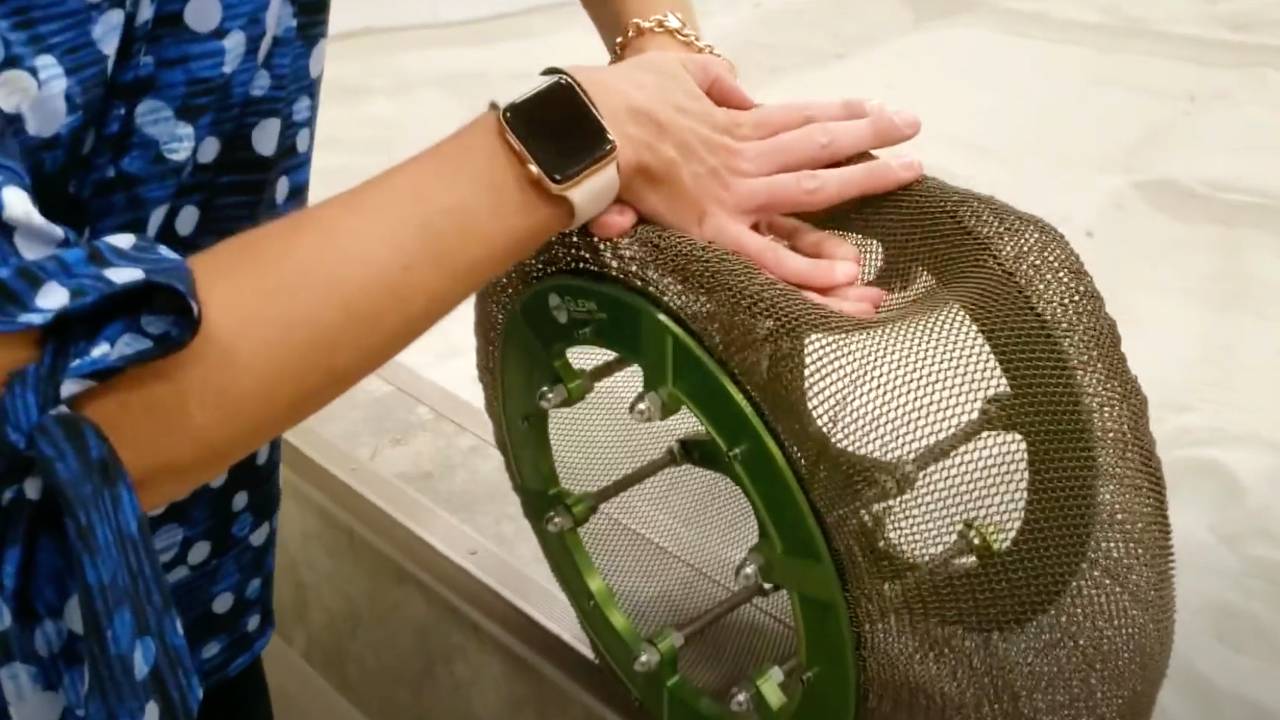
The tires can be bent out of shape but then spring back to their original form. /SMART Tire Company
The tires can be bent out of shape but then spring back to their original form. /SMART Tire Company
"Electric vehicles are much heavier, it makes the normal tires now wear out quicker so that the trade goes faster," says Cole.
"We feel that high tech cars which are electric and should have high tech tires because right now we're getting these high tech vehicles using the same low tech tire technology from 100 years ago."
Tire-makers are under pressure to rethink their wheel as regulators turn their attention to tire pollution that is set to surge with the rise of electric vehicles EVs.
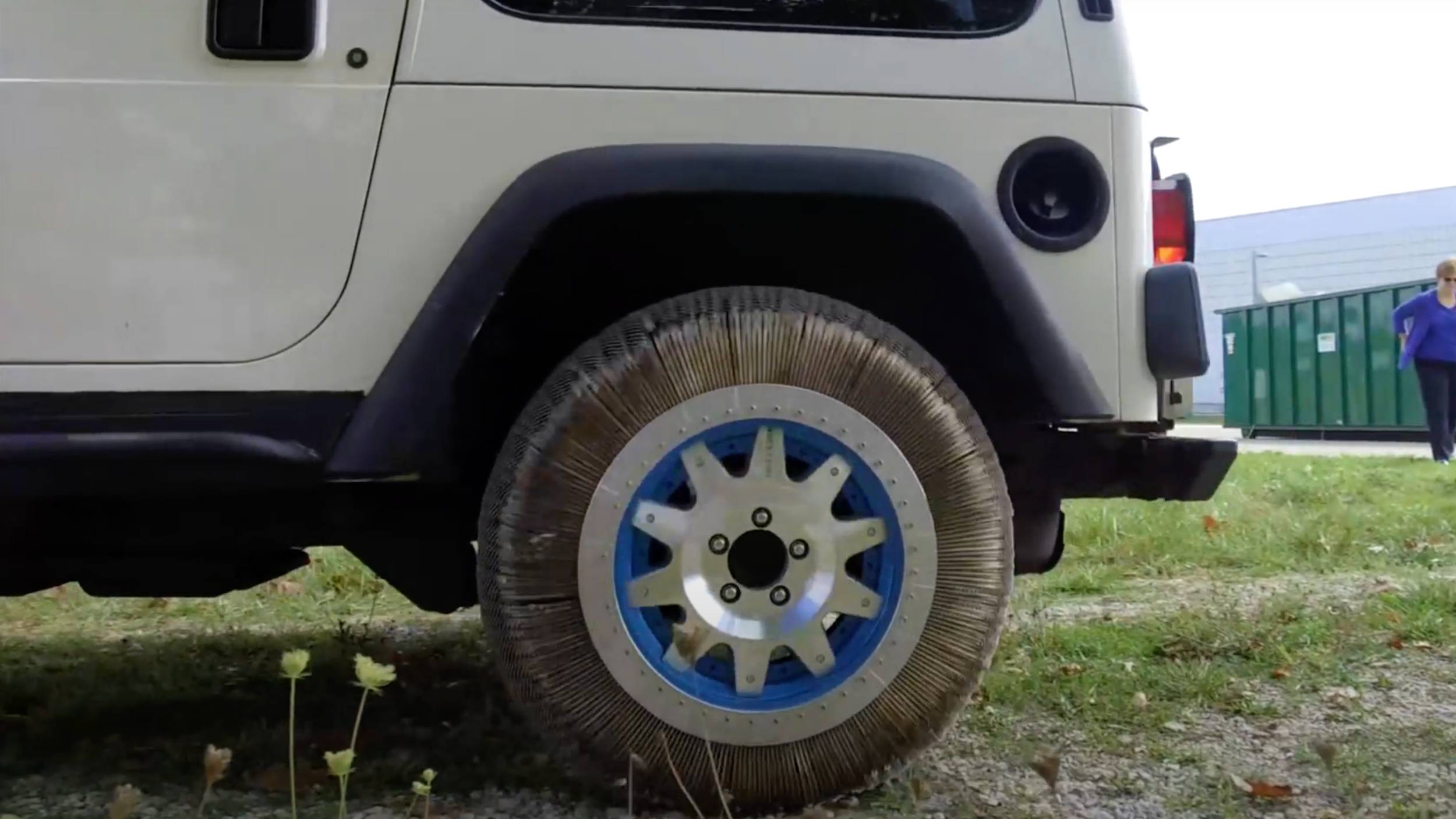
The tires are being tested on cars, but will first be sold for bicycles. /SMART Tire Company
The tires are being tested on cars, but will first be sold for bicycles. /SMART Tire Company
When tires make contact with the road, tiny particles called microplastics are worn away and emitted into the air and ground around.
The extra weight of EVs linked to their batteries means this little-known form of pollution – from an estimated 2 billion tires produced globally every year – is becoming a bigger problem.
The World Health Organization said in 2019 that there was an urgent need to find out more about the health impact of microplastics, which some environmental researchers say could weaken the immune system.
The SMART Tire Company hopes to offer a solution to this problem, while also tapping into an industry worth hundreds of billions of dollars.
The company will release its first commercial product in Spring 2024: an airless SMART bicycle tire.
Cole said it already has a waiting list of tens of thousands of cyclists around the world.
Separately, it is working on the latest rovers for NASA's Lunar Terrain Vehicle program, which is set to land and drive astronauts to the Moon in 2028-2029 for the Artemis V mission.

Subscribe to Storyboard: A weekly newsletter bringing you the best of CGTN every Friday
Source(s): Reuters